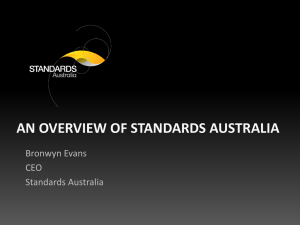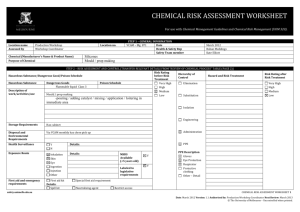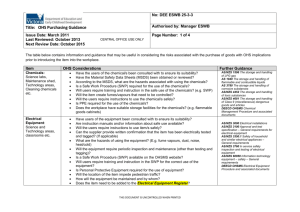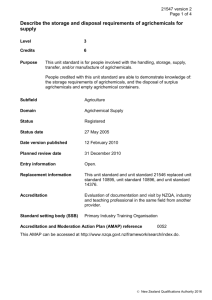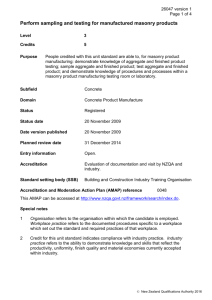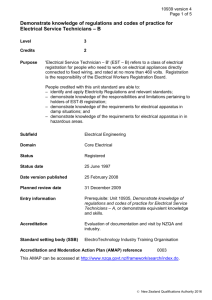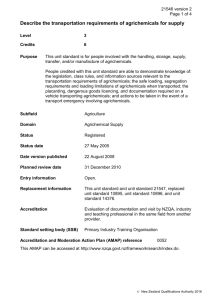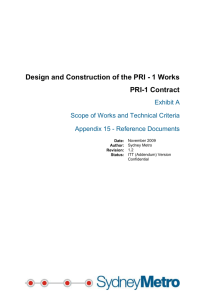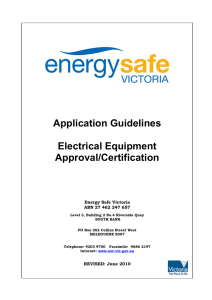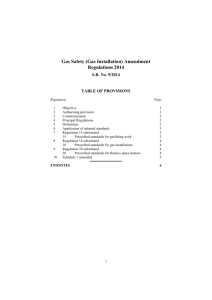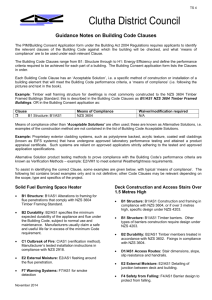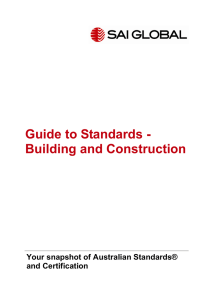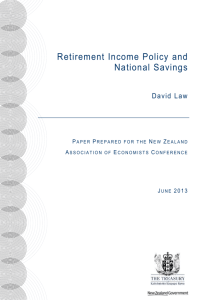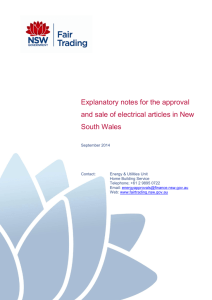AS/NZS 4020 * Testing of Products for use in contact with Drinking
advertisement
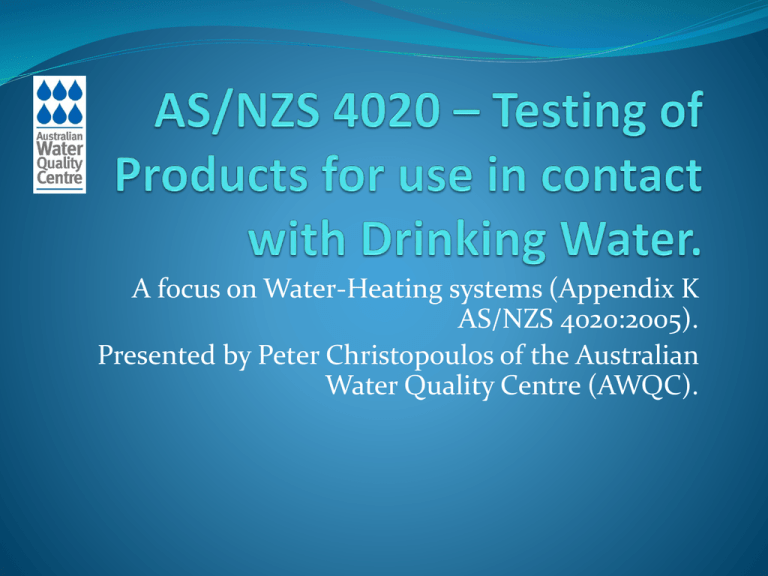
A focus on Water-Heating systems (Appendix K AS/NZS 4020:2005). Presented by Peter Christopoulos of the Australian Water Quality Centre (AWQC). Who is the AWQC? Australian Water Quality Centre is a business unit of the South Australian Water Corporation. We provide comprehensive range of Water and Wastewater services, both Chemical and Biological testing. We are a fully NATA and ISO Accredited test facility for all tests conducted. We have an R&D Section where Water Quality and Treatment Technology solutions provided to national and international clients. What does AS/NZS 4020 mean? It assesses the suitability of products/materials in contact with drinking water. Developed from the British Standard BS6920 in 1991 and since evolved to capture conditions experienced in Australia. The AWQC has been responsible for developing new methods such as the MTT Assay for Cytotoxicity. We are testing to the fifth edition: 2005. Overview of the requirements of AS/NZS 4020. Standard ensures products do not leach compounds that can affect the health of the consumers or the aesthetics of the water: The Taste or Appearance of Water. Does not support the Growth of Microorganisms. Do not release Cytotoxic or Mutagenic Compounds and Metals. AS/NZS 4020 Looks at the following: Category of Product. o Composite – Non-Metallic products or products with a combination of metallic and non-metallic components (eg Tapware , Ball Valves). o Wholly Metallic – Metallic Pipes and Fittings. (eg Copper and Stainless Steel Pipes). o Appendix K – Water-Heating Systems (Solar, Gas, Heat Pump combinations). Example of Products Tested: Epoxy Coatings. Water Valves – Ball Valves. Lubricants. Domestic Tapware . Hot Water Systems. O-Rings/Gaskets - Sealing Pipes . Water Tank Material – Cementitious/Polyethylene. Products not covered by AS/NZS 4020: Lime. Coagulants. Activated Carbon. Ion-Exchange Resins. Coffee/Tea Electric Kettles. Drinking Water Bottles. Comparing the requirements of AS/NZS 4020. Composite Testing Appendix K – HWS Testing Taste Assessment. Appearance Appearance (Colour/Turbidity). Cytotoxic Activity. Mutagenic Activity. Extraction of Metals. (Colour/Turbidity). Microbial Growth. Cytotoxicity Activity. Mutagenic Activity. Extraction of Metals. NB – Microbial Growth and Taste Assessment not required. Sample Extraction Procedure for use with Water-Heating Systems. Appearance of Water Extract – Investigation into whether products leach compounds that effect the visual aspect of water. Colour or Turbidity. Cytotoxic Activity of Water Extract – To ensure poisonous (toxic) compounds are not leached. Mutagenic Activity of Water Extract – No compounds are released that can cause genetic mutations. Extraction of Metals – Water analysed to ensure 12 metallic elements do not exceed the maximum allowable concentration as per the ADWG. How do we Test? Hot Water Systems are installed in a designated test area at the AWQC. All installations are done in accordance to Australian Plumbing Standards. Installations at the AWQC are done by a fully licensed Plumber. Hot Water Systems are set up and run as per manufacturer’s instructions/directions. How do we Test? HWS are flushed and allowed to reach maximum operable temperature after installation. Water Sample Extracts are taken from each unit at the correct time interval and then flushed to simulate water flow when in use. Water Sample Extracts are then analysed in the laboratory for results. What do I need to organise a test? 3 Complete Units are Units to also have required. Units need to comply to Australian Standard for performance – pressure, electrical, gas. Units to be accompanied with correct fitting sizes for connection to Standard Australian Copper diameters. installation instructions provided. Reminder – All gas units to be set for Natural Gas only. Solar Systems to AS/NZS 4020. Due to irregularities in weather, Solar HWS can be connected onto our test manifolds to ensure constant, uniform heat supply. All units are plumbed and run with water that meets the Australian Drinking Water Guidelines (ADWG). What do I need to know? Duration is approximately 6 – 8 weeks for Appendix K HWS and 12-14 weeks for full composite. At conclusion, a final Test Report is issued. Provide copy of Test Report to your Certification Body for Watermark. Where might there be issues? Composite Products – Appendix K Such as Tapware/Pipes. Taste Assessment. Cytotoxicity. Microbial Growth. Appearance – Breakdown of enamels in tanks or corrosion in tanks and fittings. Conclusion. A number of other Standards reference AS/NZS 4020. Check with your Certification Body representative. Challenge for manufacturers is to produce commercially viable systems that do not leach harmful compounds into water. Contact us for further assistance. Directly to the AS/NZS 4020 Lab on (08) 7424 1512. Email awqc@sawater.com.au Web www.awqc.com.au Via Vipac Engineers and Scientists +613 9647 9700. Via your Certification Body Representative.
